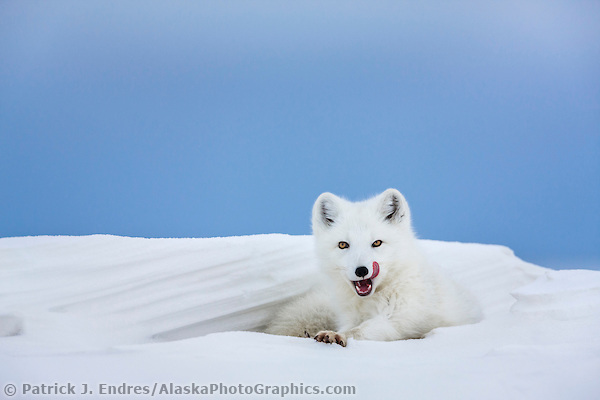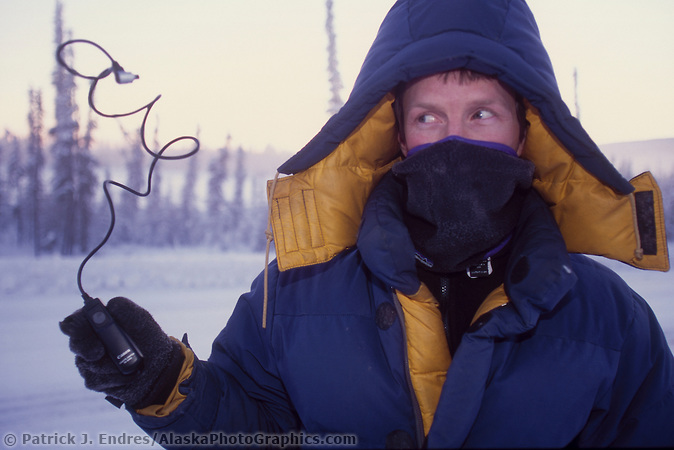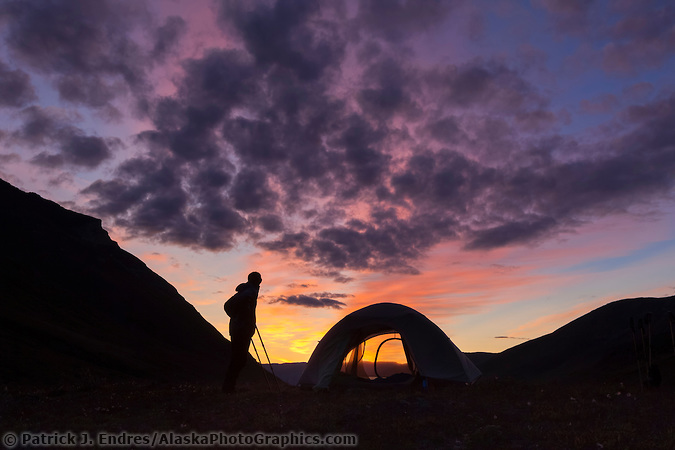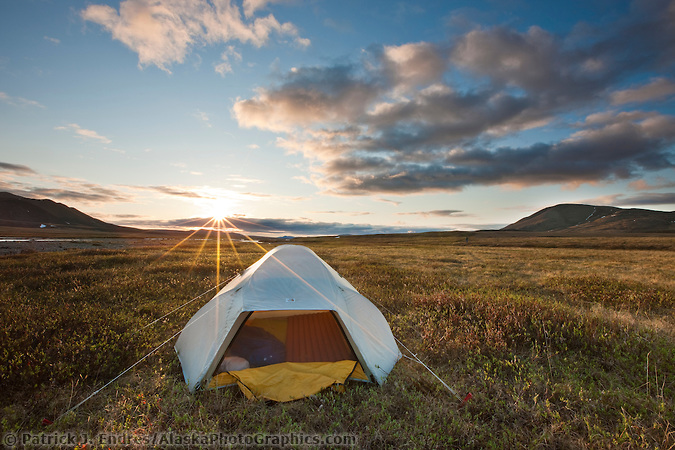I get many questions about the topic of wildlife photography in Alaska. In response to this over the years, I have written a little article that addresses some of the basic things to consider.
Photographing Alaska Wildlife
Photographing Alaska wildlife is a rewarding experience, it’s also a challenging one. Alaska is a big place, access to remote locations can be riddled with finicky weather. But these are components that are common to the amateur and professional photographer alike.
Persistence and patience, scouting, and good planning are essential ingredients, and they will pay off in the end. I composed a few tips below for an article some time ago, but have expanded on them. Things to consider before embarking on a wildlife photography trip.
Tips for Photographing Alaska Wildlife
1) Choose the appropriate personal gear
Dress appropriately and have your camera gear well packed and prepared for the type of travel, hiking or trekking necessary for the task. This is not an insignificant issue in Alaska. Depending on the season, weather conditions can be extreme, and extremely variable. In the summer, whenever I travel to mountain country, I usually have both a pair of shorts and a down jacket along. Days can be hot, but I’ve been snowed on in every month of the year. So, things of great value are down sweaters, rain pants, wind/rain jacket, light gloves, hat, and good merino wool base layer clothing.

Me with a 60+ pound backpack in the Arrigetch Peaks (© Amy Johnson)
2) Choose the appropriate camera gear
This will vary based on the subject you are targeting. The more general you go, the more gear you are likely to need. This is often the case for me, I have lenses from 14mm to 500mm in my bag, along with a tripod or two. As for the correct camera bag….well, there isn’t one. However, there is one that will best suit your specific trip. I’m fond of the Kiboko bag by Gura Gear. I like what it does not include as much as what it does include. It is light and rugged. It is a little shy on extra space for carrying clothing, etc., on a long day trek, but I’ve shoved it fully and got by o.k. As my years accumulate, I become more fond of slimming down on gear to reduce the overall weight I carry on a daily basis. Carbon fiber tripods, light but tough camera bags, newer lenses that are lighter, it all ads up. But it is true, you pay dearly for the absence of a few pounds of gear in general.
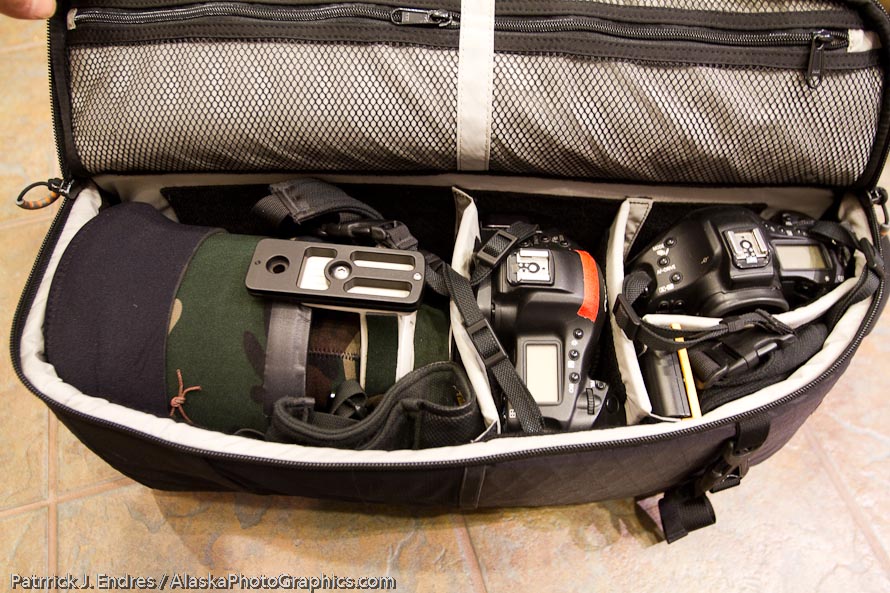
Camera gear in Kiboko bag
3) Get in shape
Get in reasonable shape for the physical demands that await you. One could take this to the extreme, but the general rule is to avoid the recovery phase that often follows the first few days of high activity, or doing tasks not common to your daily routine. So if you are going to be packing your camera bag on 5-mile treks each day, make sure to do this a few times before your departure and you will be in a better place to take advantage of all opportunities, and you won’t be reaching for Ibuprofen as often.
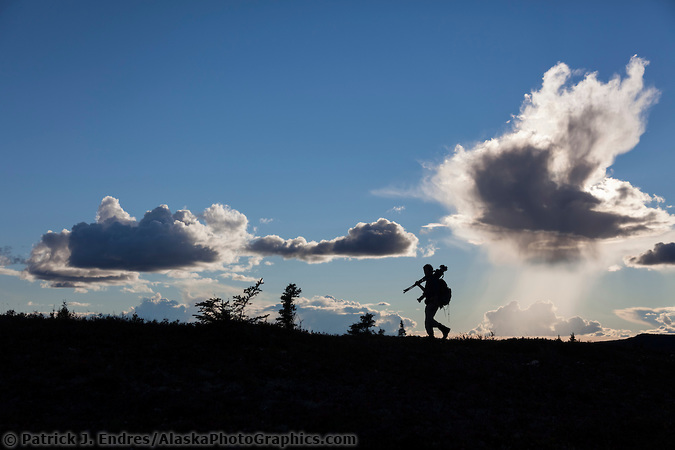
Photographer silhouetted against the sky in Denali National Park. (Patrick J. Endres / AlaskaPhotoGraphics.com)
4) Research your subject.
Know your subject. Understand and respect a comfortable working distance from the wildlife you seek to photograph. Do a little reading and research on your subjects. Most animals are creatures of great habit, and they frequent similar areas and can be somewhat predictable. It takes a little time however to discern their movements. The more you know about them, the better situated you are. Be a keen observer when you are with them in the field. Be careful of proximity, especially to habituated animals. You can tell if you are too close to a subject, whether it feels comfortable with your presence. Some National Parks (like Denali National Park) have guidelines on minimum distances from various species, you need to be apprised of these. Brown bears or grizzly bears inhabit much of Alaska, and if you are camping, cooking, eating, you need to be careful and informed on the protocol for good camp and food etiquette in bear country.
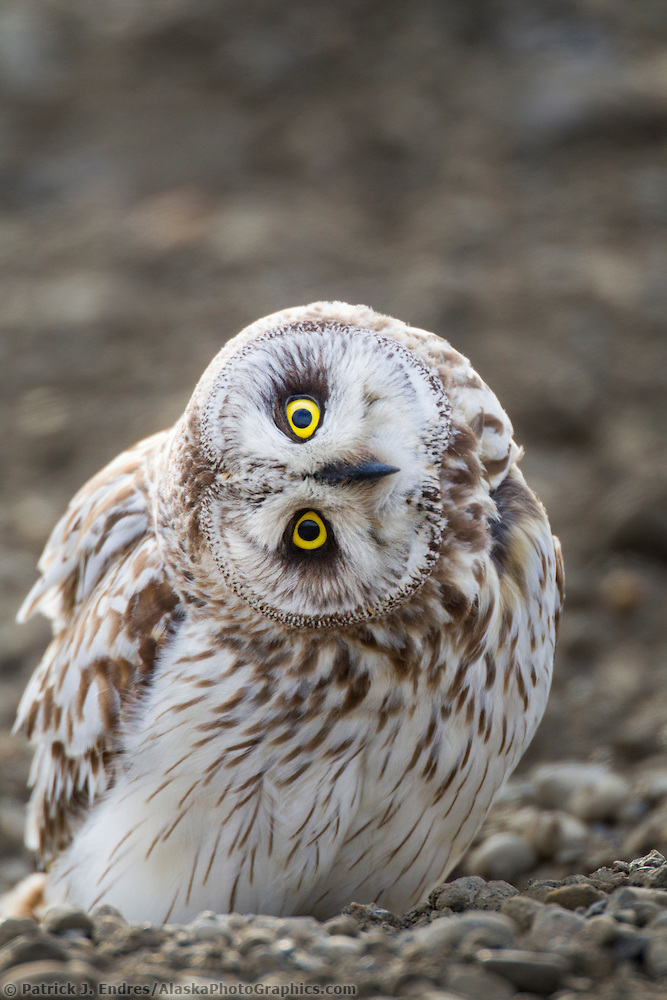
An inquisitive short-eared owl stares intently while standing on the surface on Alaska’s Arctic North Slope. (Patrick J. Endres / AlaskaPhotoGraphics.com)
5) Work with the light.
If possible, scout the area ahead of time and know the lighting conditions: when, where and how the morning and evening light and shadows fall. This is somewhat obvious, but also difficult. Weather in the mountain country is often cloudy and you don’t have that luxury to predict where the light will fall. But do not underestimate the value of really exploring the light. You know, it is what makes those outrageous images. There is simply no way around it. Check out my blog post on IPhone apps, there is a great one called Focalware that will tell you sunrise and sunset times based on lat and long coordinates. This is very valuable. Additionally, the sun in Alaska is at extreme angles, especially near the summer and winter solstice. Where it appears in the sky is important, especially to landscape photography. Perpendicular light or some degree of angle creates dimension. If you are in a mountain range that spans an east to west orientation, you are likely to be shooting in front light during the golden hour, which is terrible, even though the golden color is beautiful. Research your spatial orientation.
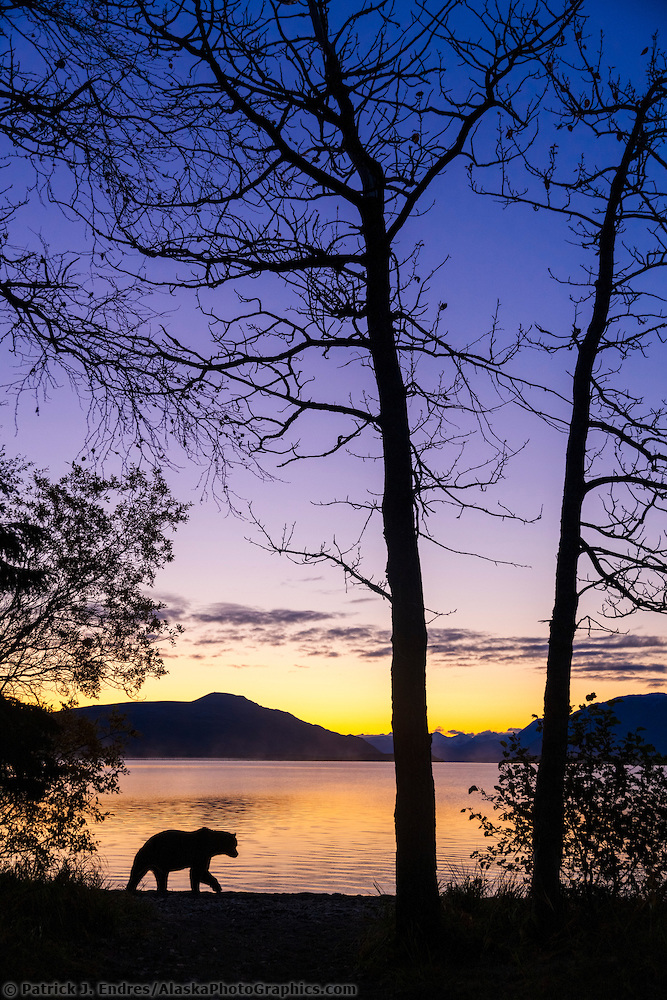
Brown bear walks along the shores of Naknek lake just before sunrise in Katmai National Park, Alaska. (Patrick J. Endres / AlaskaPhotoGraphics.com)
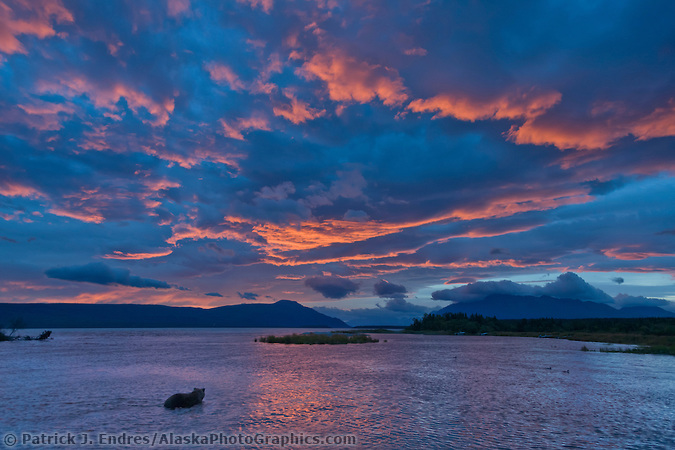
Brown bear wades in the Brooks River, morning sunrise over the Brooks River and Naknek Lake, Katmai National Park, Alaska. (Patrick J. Endres / AlaskaPhotoGraphics.com)
6) Use a tripod if necessary.
This will help in tracking and following moving wildlife. Please, do yourself a huge favor and get a good tripod and a good ballhead. And yes, they are ridiculously expensive, I know. Believe me, I know, I own many. But they are a very critical element in your gear line up. A few companies that offer these are Really Right Stuff and Kirk Enterprises. Gitzo and Bogen offer tripods, you could probably trade in your car for a nice Gitzo carbon fiber tripod! With maybe enough cash back to get a good ballhead too! After having said that, you don’t need the biggest, heaviest tripod out there. I have moved towards much smaller, lightweight versions, especially for landscape photography, and in particular in conjunction with the Image Stabilization lens options. Use a tripod when necessary, but don’t be anchored and made unproductive by being chained to it. I shoot my 500mm canon hand held all the time, and the images are impeccably sharp. It is possible with a little technique.
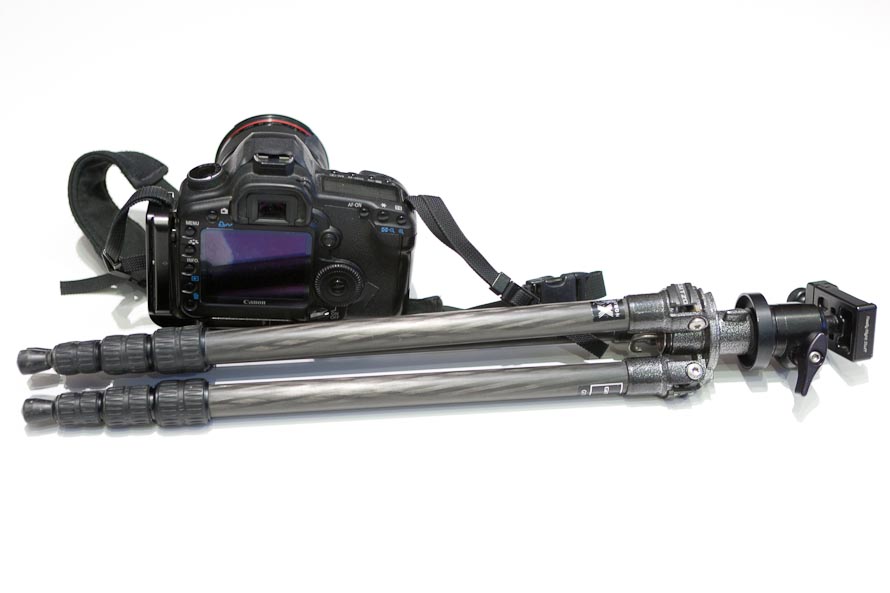
One of my favorite mini tripods when I need to travel light in the backcountry. Yes, I use my big glass, sometimes the 500mm, on this little tripod. It is not conventional wisdom in the photo world, but it works great for me.
7) Consider perspective.
An Eye level position will help portray a more natural scene of the animal in its environment. But there is more to consider than just a straight on shot to your subject. Be creative. You might need to shoot laying on your belly or climb up on a ladder, in a tree, or whatever, but do what it takes to make the perspective look natural and interesting.
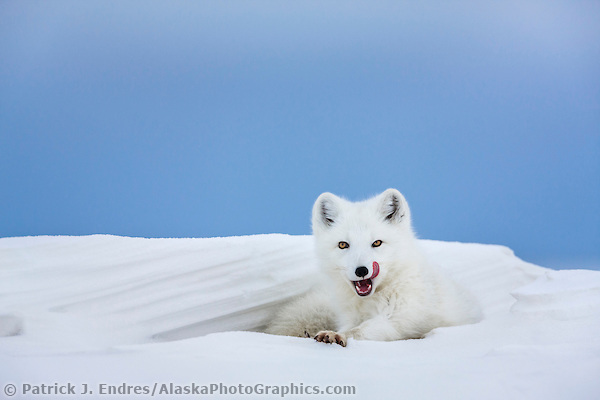
Arctic fox in white winter coat rests in a snowdrift along a lake in Alaska’s arctic north slope. (Patrick J. Endres / AlaskaPhotoGraphics.com)
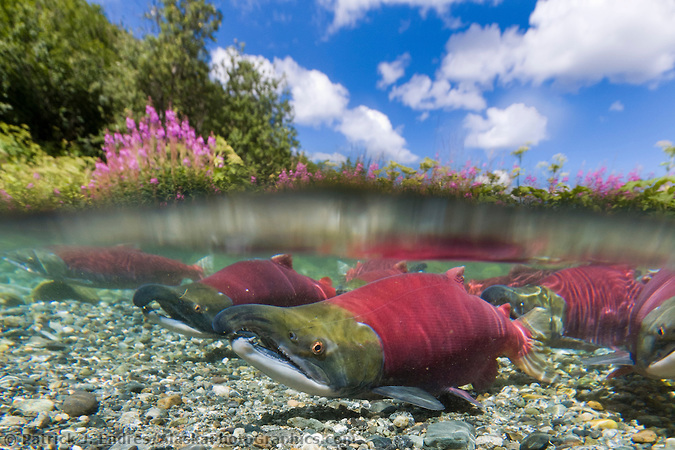
Red salmon or “sockeye” in spawning phase (red body and green head) in a small stream in the Alaska mountains. (Patrick J. Endres / AlaskaPhotoGraphics.com)
8 Avoid tunnel vision.
Repeat, beware of tunnel vision. This is a bad habit easily acquired when shooting moving subjects, especially with the long, telephoto lenses common in wildlife photography. One tends to just aim and shoot and not really evaluate the composition. The result is that you end up with your subject centered in every frame. It is not easy, but try to anticipate your subject’s movements and therefore bring some element of space and composition to your frame. If possible, occasionally examine the full frame area of your image. Experiment with focus points that are not just the center one. You are not just target shooting, you are, or should be composing. It is a challenge, especially with active moving subjects and attempting to keep your autofocus targeted correctly. Think about your subject, but think about the space around it also, and…shoot a lot!
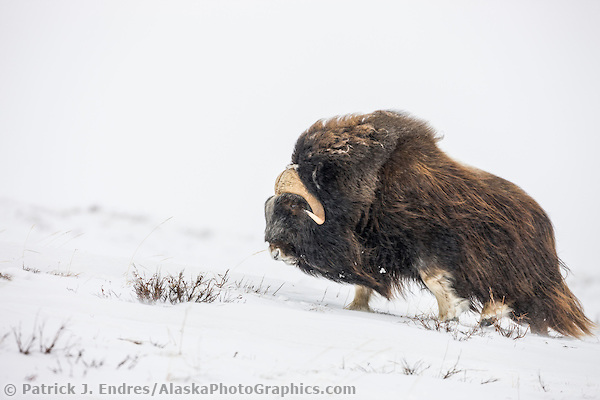
Bull muskox on the snow-covered tundra of the arctic north slope, Alaska (Patrick J. Endres / AlaskaPhotoGraphics.com)
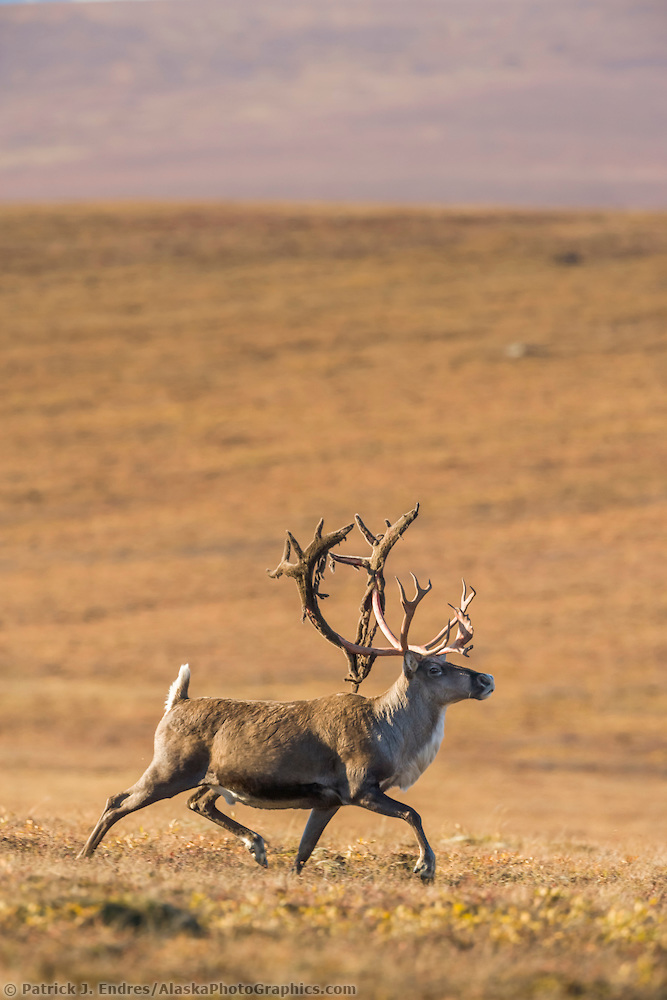
Bull caribou, rangifer tarandus, prances across the tundra north of the Brooks range, Arctic, Alaska. (Patrick J. Endres / AlaskaPhotoGraphics.com)
9) Work fast.
Have extra film, digital media or batteries readily accessible should a quick change be necessary. If you plan to work from a tripod with a long lens, then practice and be fast and efficient with its use. Know the necessary functions on your camera to make quick changes, like focus points, focus methods, exposure compensation, etc. Get a system that allows access to a second lens or possibly second body and lens together. Sometimes you find an animal makes a closer approach than expected and your long glass is just that – too long, and you miss an interesting shot due to lack of the proper lens.
10) Experiment and broaden.
Use telephoto frames, but back off to capture the animal in its environment, too. Context means a lot and can say much. Step back and look around you. Attempt to place the animal in a space, in time and place. Include some of its environment that helps tell the story of where it lives.
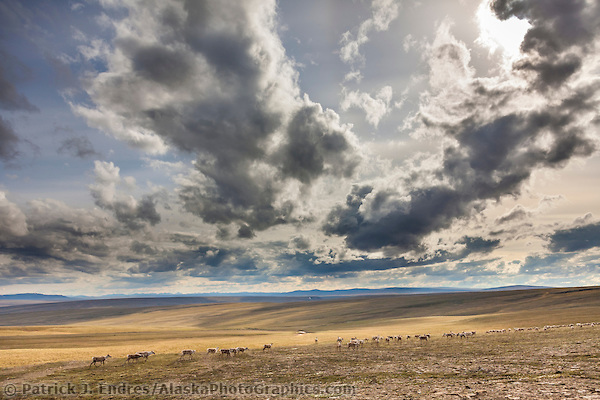
Western arctic caribou herd migrates in the Utukok uplands, National Petroleum Reserve Alaska, Arctic, Alaska. (Patrick J. Endres / AlaskaPhotoGraphics.com)
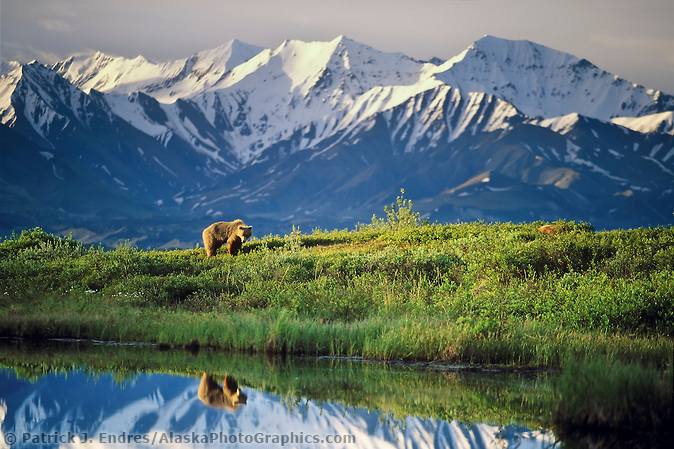
Female grizzly bear basks in the morning sun near a small tundra pond in Denali National Park, Alaska, snow-covered Alaska mountain range in the distance. (Patrick J. Endres / AlaskaPhotoGraphics.com)
11) Blend patience and persistence.
Do your best to blend enjoying being out in the natural world with the sheer persistence and patience often necessary to capture the image. Wildlife photography often includes downtime while waiting for the subject or the weather, or both! Some people have a greater tolerance for waiting, and it helps if you anticipate this and consider ways you can keep yourself occupied. That might be reading a book, (your camera manual for example), hiking, watching other subjects…whatever it is, it does help to anticipate it and be prepared.
12) Be weather-wise.
Inclement weather can provide situations for spectacular photos. They offer mood and feeling. Dress appropriately and go out in the dramatic weather as well as the good weather.
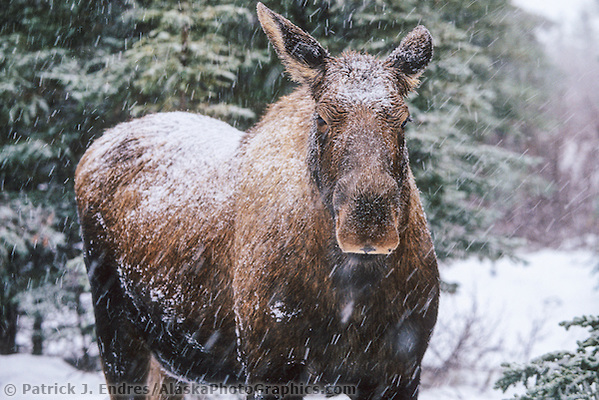
Cow moose in a winter snowstorm. Denali National Park, Alaska. (Patrick J. Endres / AlaskaPhotoGraphics.com)
13) Get up early, stay up late
If you happen to have the ability to sleep anywhere, anytime. Good for you, I’m envious. Generally, shooting in Alaska, in particular, the summer season, the light never ends. Furthermore, the golden hour becomes a very late, and very early experience. You simply have to stay up late and get up early to get this quality of light. In the high arctic, I’ve had to switch my entire sleep schedule and start shooting around 10 pm and end about 5 am, crawling in a tent with hopes to catch enough sleep to be refreshed for the next day. Consider where you are traveling in Alaska, and what the sunrise, sunset times are for that location and time of year, it varies considerably.

